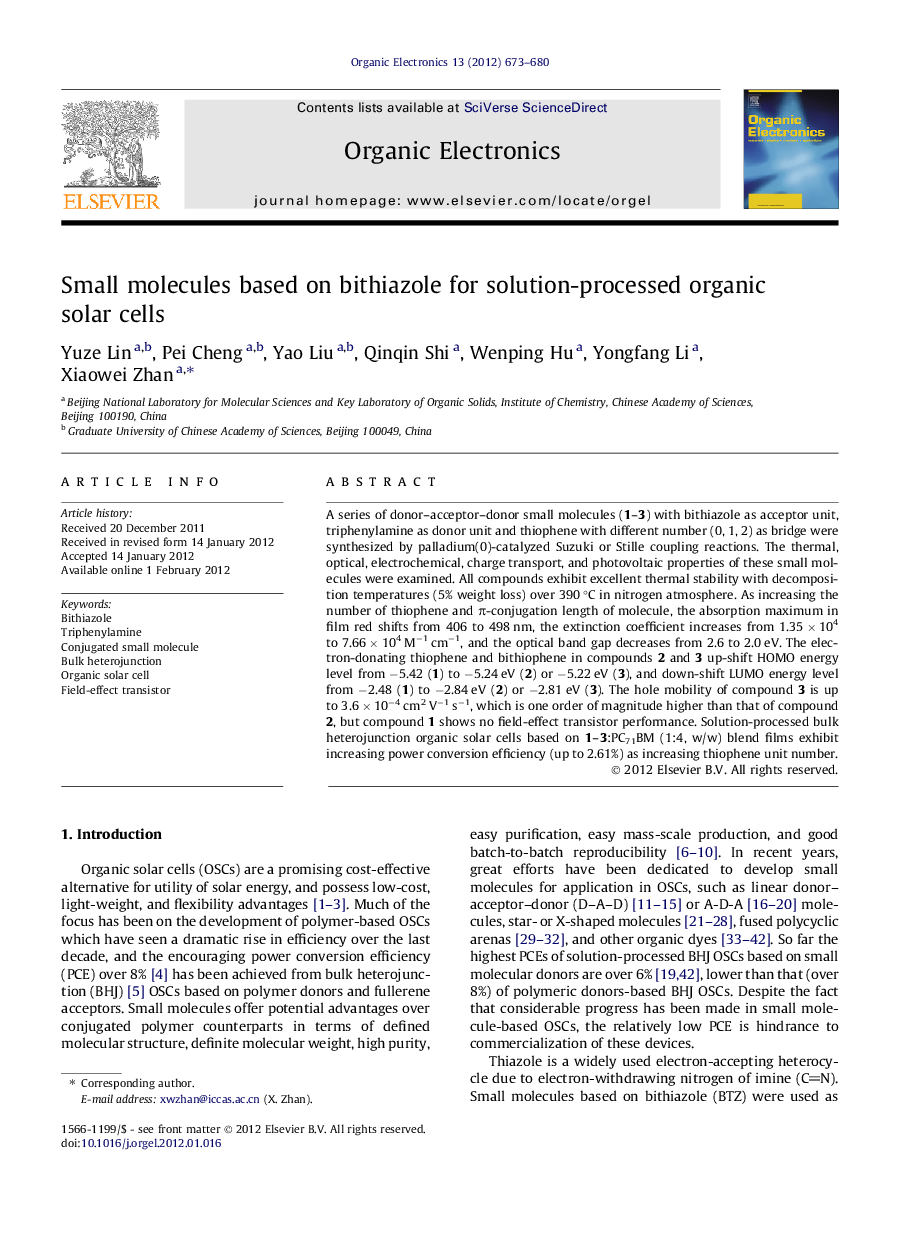| کد مقاله | کد نشریه | سال انتشار | مقاله انگلیسی | نسخه تمام متن |
|---|---|---|---|---|
| 1264604 | 972159 | 2012 | 8 صفحه PDF | دانلود رایگان |

A series of donor–acceptor–donor small molecules (1–3) with bithiazole as acceptor unit, triphenylamine as donor unit and thiophene with different number (0, 1, 2) as bridge were synthesized by palladium(0)-catalyzed Suzuki or Stille coupling reactions. The thermal, optical, electrochemical, charge transport, and photovoltaic properties of these small molecules were examined. All compounds exhibit excellent thermal stability with decomposition temperatures (5% weight loss) over 390 °C in nitrogen atmosphere. As increasing the number of thiophene and π-conjugation length of molecule, the absorption maximum in film red shifts from 406 to 498 nm, the extinction coefficient increases from 1.35 × 104 to 7.66 × 104 M−1 cm−1, and the optical band gap decreases from 2.6 to 2.0 eV. The electron-donating thiophene and bithiophene in compounds 2 and 3 up-shift HOMO energy level from −5.42 (1) to −5.24 eV (2) or −5.22 eV (3), and down-shift LUMO energy level from −2.48 (1) to −2.84 eV (2) or −2.81 eV (3). The hole mobility of compound 3 is up to 3.6 × 10−4 cm2 V−1 s−1, which is one order of magnitude higher than that of compound 2, but compound 1 shows no field-effect transistor performance. Solution-processed bulk heterojunction organic solar cells based on 1–3:PC71BM (1:4, w/w) blend films exhibit increasing power conversion efficiency (up to 2.61%) as increasing thiophene unit number.
Figure optionsDownload as PowerPoint slideHighlights
► A series of small molecules based on bithiazole were synthesized.
► These molecules exhibit strong absorption, low HOMO levels and high hole mobilities.
► Solution processed organic solar cells based on these molecules exhibit power conversion efficiencies as high as 2.61%.
Journal: Organic Electronics - Volume 13, Issue 4, April 2012, Pages 673–680